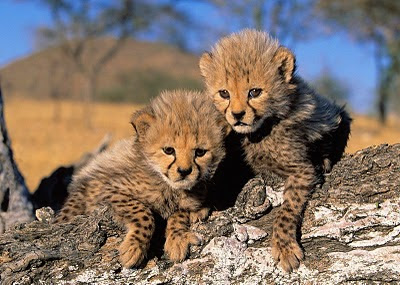This highly variable city pigeon is familiar to all urban dwellers. Multicolored birds were developed over centuries of near domestication. Polytypic (12 ssp.; nominate in North America.). Length 12.5" (32 cm).
Identification A medium-size compact pigeon with long wings and a short tail. Birds most closely resembling their wild ancestors are gray with head and neck darker than back, and a prominent white rump. Black tips on the greater coverts and secondaries form bold black bars on inner wing, and there is a broad black terminal band on the tail. Adult male: metallic green and purple iridescence on the neck and breast; iris orange to red; orbital skin blue-gray; bill grayish black; and feet dark red. Adult female: like male, but iridescence on neck and breast more restricted and subdued. Juvenile: generally browner, lacks iridescence; orbital skin and feet gray.
Voice Call: a soft coo-cuk-cuk-cuk-cooo.
Status and Distribution The rock pigeon was introduced from Europe by early settlers; it is now widespread and common throughout the United States and southern Canada, particularly in urban settings. Gregarious and forming large flocks, it feeds on handouts and grains during the day in city parks and open fields; roosts on buildings at night. Flocks or otherwise displaced pigeons can be found far from civilization. Breeding: nest is loosely constructed of twigs and leaves, primarily on structures such as window ledges, bridges, and in barns; has 2 white eggs.
Population Primarily associated with human development and dependent on people for food and shelter.
(Sorry for the hold-up on Animal of the Week the last couple of weeks.)
Sunday, April 22, 2012
Thursday, April 12, 2012
Saturday, April 7, 2012
Animal of the week fun!

This large, pudgy mammal is a marsupial, or pouched animal, found in Australia and on scattered islands nearby. Like other marsupials, wombats give birth to tiny, undeveloped young that crawl into pouches on their mothers' bellies. A wombat baby remains in its mother's pouch for about five months before emerging. Even after it leaves the pouch, the young animal will frequently crawl back in to nurse or to escape danger. By about seven months of age, a young wombat can care for itself.Wombats use their claws to dig burrows in open grasslands and eucalyptus forests. They live in these burrows, which can become extensive tunnel-and-chamber complexes. Common wombats are solitary and inhabit their own burrows, while other species may be more social and live together in larger burrow groups called colonies.Wombats are nocturnal and emerge to feed at night on grasses, roots, and bark. They have rodentlike incisors that never stop growing and are gnawed down on some of their tougher vegetarian fare.The field and pasture damage caused by wombat burrowing can be a destructive nuisance to ranchers and farmers. Wombats have been hunted for this behavior, as well as for their fur and simply for sport. Some species (the northern hairy-nosed wombats) are now critically endangered, while others (the common or coarse-haired wombat) are still hunted as vermin. Space for all wombats is at a premium as farm and ranch lands increasingly replace natural space.
Fast Facts
Type:MammalDiet:HerbivoreSize:28 to 47 in (71 to 119 cm)Weight:32 to 80 lbs (15 to 36 kg)Group name:Mob or ColonySize relative to a 6-ft (2-m) man:
Tuesday, April 3, 2012
Monday, April 2, 2012
Woof! Woof!

Come see me and all my doggy and kitty friends at: http://www.warrenphotographic.co.uk/gal1100/2/flower-cats-cute-dogs
We'll be waiting for you! See you then!
Love,
The Daffodil
Puppy
The Daffodil
Puppy
Animal of the week fun!

An armadillo roots around the forest floor in search of food. Armadillos have poor eyesight but a keen sense of smell and long claws for digging.
Of the 20 varieties of armadillo, all but one live in Latin America. The familiar nine-banded armadillo is the only species that includes the United States in its range.Armadillo is a Spanish word meaning “little armored one” and refers to the bony plates that cover the back, head, legs, and tail of most of these odd looking creatures. Armadillos are the only living mammals that wear such shells.Closely related to anteaters and sloths, armadillos generally have a pointy or shovel-shaped snout and small eyes. They vary widely in size and color, from the 6-inch-long (15-centimeter-long), salmon-colored pink fairy armadillo to the 5-foot-long (1.5-meter-long), dark-brown giant armadillos. Others have black, red, gray, or yellowish coloring.Contrary to popular belief, not all armadillos are able to encase themselves in their shells. In fact, only the three-banded armadillo can, curling its head and back feet and contorting its shell into a hard ball that confounds would-be predators.Armadillos live in temperate and warm habitats, including rain forests, grasslands, and semi-deserts. Because of their low metabolic rate and lack of fat stores, cold is their enemy, and spates of intemperate weather can wipe out whole populations.Most species dig burrows and sleep prolifically, up to 16 hours per day, foraging in the early morning and evening for beetles, ants, termites, and other insects. They have very poor eyesight, and utilize their keen sense of smell to hunt. Strong legs and huge front claws are used for digging, and long, sticky tongues for extracting ants and termites from their tunnels. In addition to bugs, armadillos eat small vertebrates, plants, and some fruit, as well as the occasional carrion meal.Population numbers of nearly all species are threatened by habitat loss and over-hunting. Many cultures in the Americas consume armadillo flesh, which is said to resemble pork in its flavor and texture. Currently, only the nine-band population is expanding, and some species, including the pink fairy, are threatened.
Fast Facts
Type: Mammal. Diet: Omnivore. Average life span in captivity: 12 to 15 years. Size: 5 to 59 in (13 to 150 cm) Weight: 3 oz to 120 lbs (85 g to 54 kg) Protection status: Threatened. Did you know?The nine-banded armadillo’s hapless propensity for being run over by cars has earned it the nickname “Hillbilly Speed Bump.”Size relative to a 6-ft (2-m) man:
Subscribe to:
Comments (Atom)










